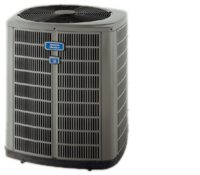
Image Credit: American Standard Heating and Air Conditioning
EPA rules will require that ozone-friendly refrigerant be used in new HVAC equipment sold after January 1, 2010. But that doesn’t mean use of ozone-depleting R-22 refrigerant will end
We are by now well accustomed to the fact that shifts to building materials, designs, and equipment billed as greener almost always yield at least one common byproduct: debate.
Nothing wrong with that. The technologies behind building systems and materials often are complex, and strategies for replacing one with another are rarely cut-and-dried.
So it is with HCFC-22 – the refrigerant commonly known as R-22 and familiar to consumers under the brand name Freon 22. It has been used for decades in residential and commercial air conditioners and heat pumps. The problem is it is a hydrochlorofluorocarbon, a gas that will deplete the ozone layer if it is released into the air, and the Environmental Protection Agency has targeted R-22 for phase-out.
Better machines for a more volatile compound
Beginning January 1, 2010, new HVAC systems must use a hyrdofluorocarbon refrigerant, an alternative to R-22 that does not cause ozone depletion, although it is party to global warming because it does throw off heat and, as a recent New York Times story notes, it requires more-heavily-built (and generally more efficient) cooling units that are capable of handling the high-pressure gas.
One common hydrofluorocarbon variant is HFC-410A, although a recent refrigerant-data update published by the Air Conditioning Contractors of America points out that some 30 new refrigerant blends have come to market over the past 10 years.
The Times emphasizes that some manufacturers and utilities are offering rebates on new equipment, and the federal economic stimulus bill provides a tax credit of up to $1,500 for the purchase, this year or next, of highly efficient residential heat pumps and central air-conditioning systems.
R-22, meanwhile, is not going away any time soon. The EPA will permit its use in existing cooling machines until they are replaced or converted to accommodate HFC. Even if the cost of R-22 climbs as its market shrinks, its complete phase-out could take many years.
Weekly Newsletter
Get building science and energy efficiency advice, plus special offers, in your inbox.














0 Comments
Log in or create an account to post a comment.
Sign up Log in